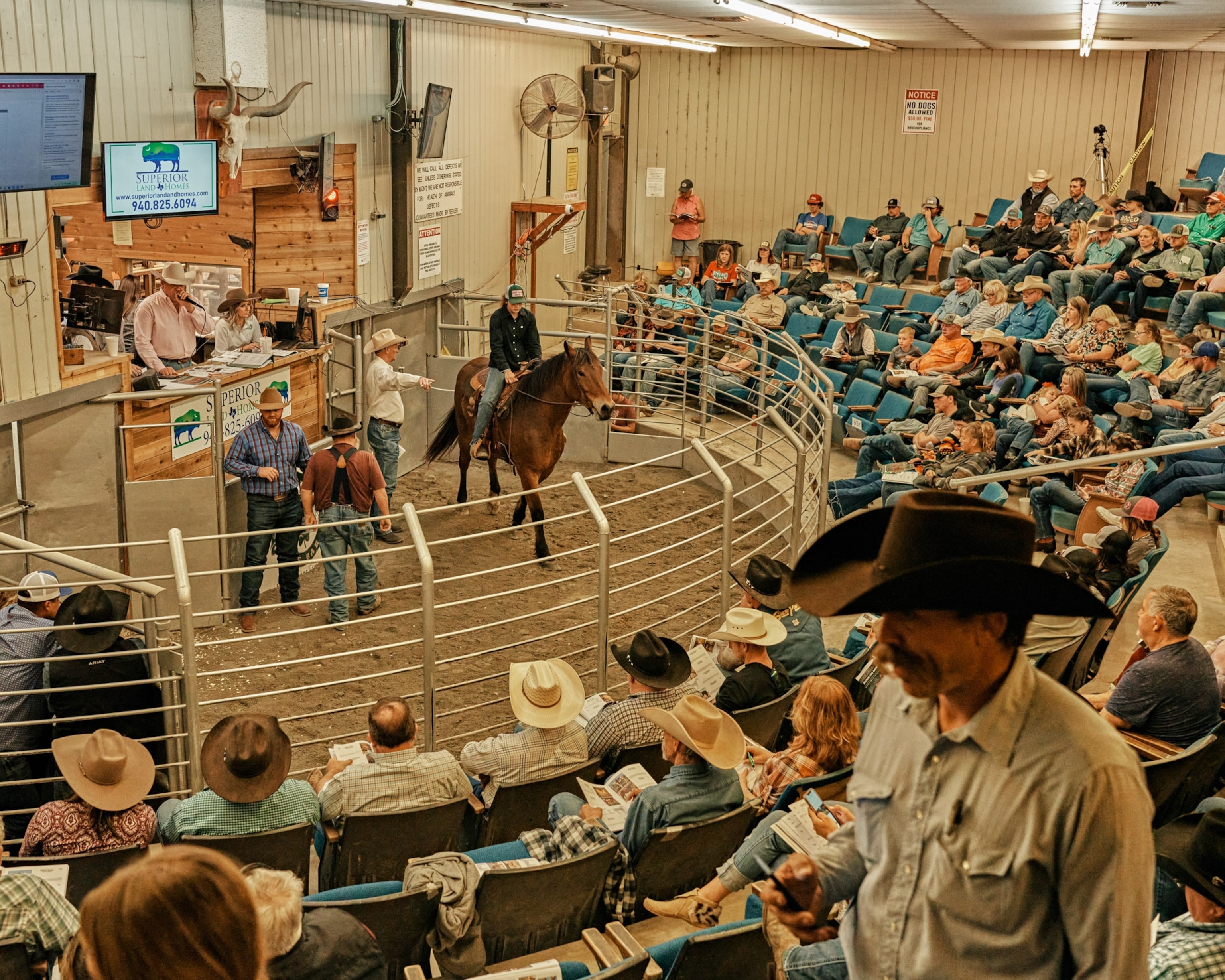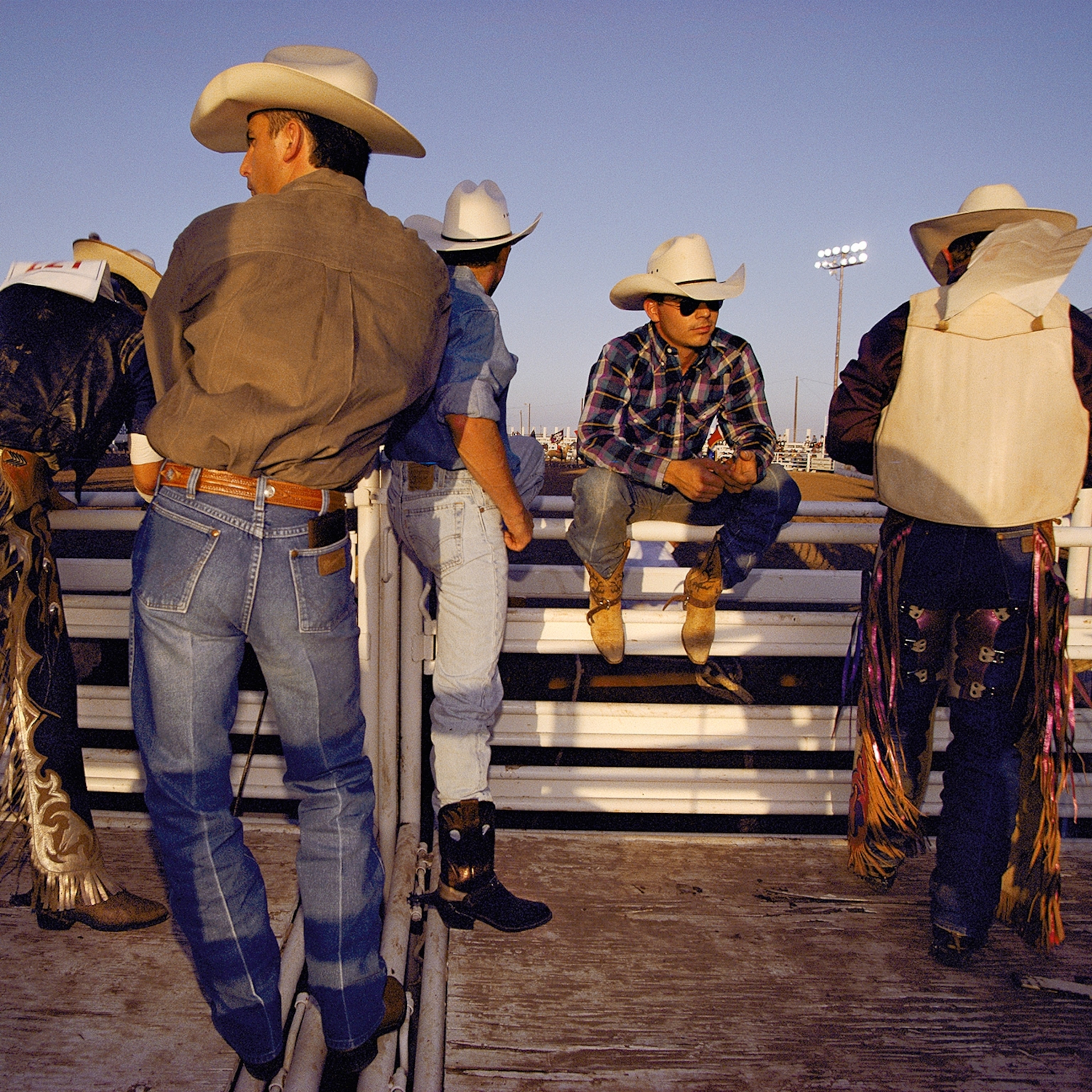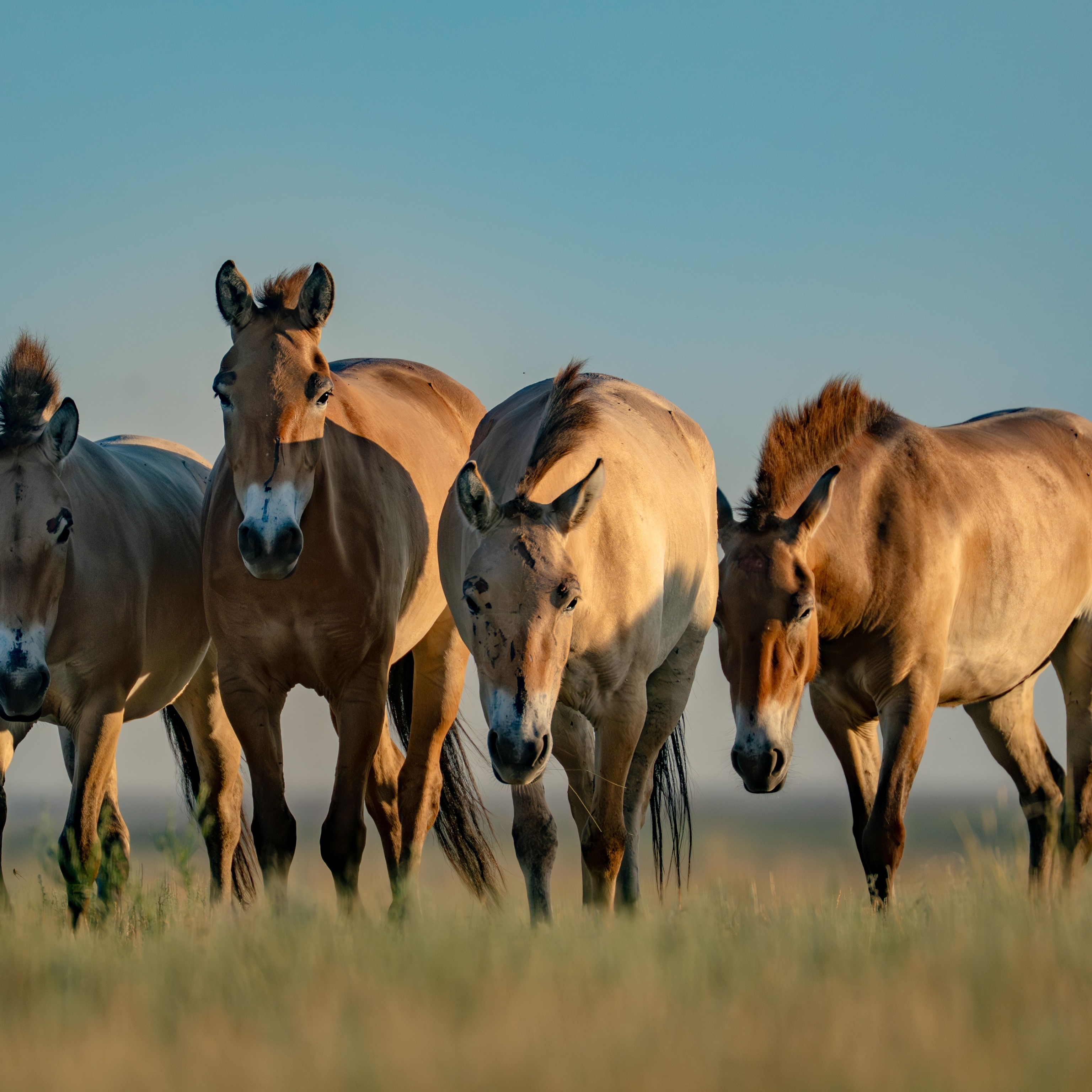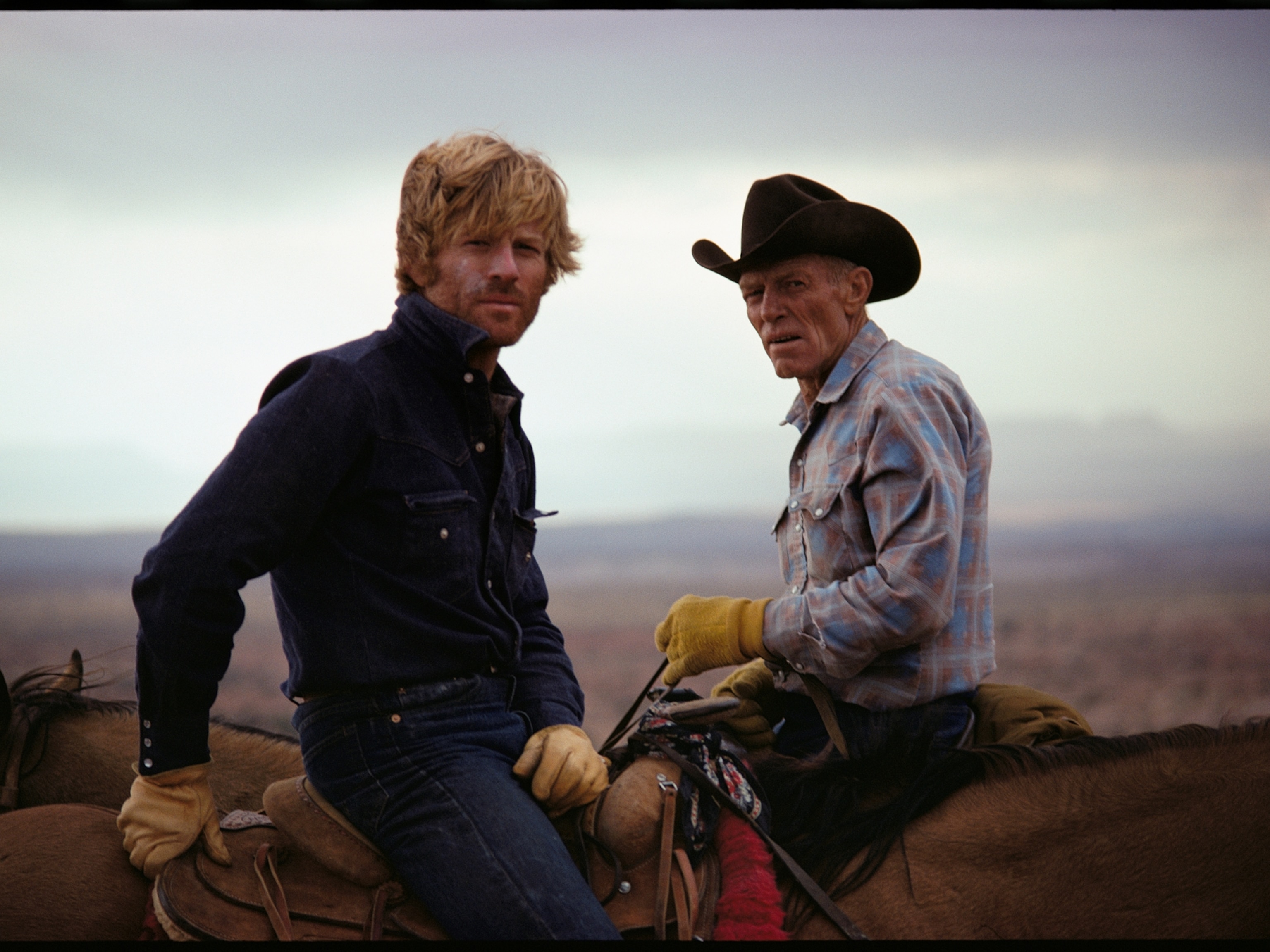
How U.S. racehorses end up on dinner plates
The global pipeline begins at poorly regulated U.S. auctions. Once a horse is marked for death, advocates say, “any concern for its welfare goes out the window.”
At a feedlot in Alberta, Canada, up to 10,000 horses await their death. In the winter, when temperatures can drop to -30 degrees Fahrenheit, the snow-covered equines huddle together for warmth. On multiple occasions, only a handful of employees were around to check on the animals, and scavengers have picked over neglected carcasses. In 2019, a dead newborn foal was found frozen to the ground.
“Pure agony” is how Sonja Meadows, president of the nonprofit Animals’ Angels, describes these animals’ situation. She’s visited the Prime Feedlot, owned by meat exporter Bouvry Exports—and others—many times, but this, “I can never forget,” she says. (Bouvry Exports did not respond to a request for comment.)
About 20,000 U.S. horses—including former racehorses, work horses, show animals, discarded pets, and even wild horses—are sold to slaughterhouses in Canada and Mexico every year, according to a recent report by U.S. nonprofits Animal Wellness Action, Center for a Humane Economy, and Animals’ Angels.
While there’s no explicit ban on killing horses for meat in the U.S., Congress has blocked funding of USDA inspections of horse slaughterhouses since 2007. Without these inspections, it’s illegal to sell horse meat across state lines.
No such bans exist in neighboring countries, however, which is why Canada and Mexico have become a “dumping ground” for unwanted horses, says Camille Labchuk, executive director of the Canadian nonprofit Animal Justice. In 2022, more than 16,300 U.S. horses were shipped to Mexico and more than 5,100 to Canada, according to USDA export data.
The supply of U.S. horses to the foreign meat industry has sharply declined from more than 300,000 in the 1990s. But the auction-to-slaughter pipeline remains notorious for its suffering. Investigations of auctions, holding pens, transport, and slaughterhouses have found animals injured, diseased, and starving, according to the report, compiled by the three animal-welfare nonprofits. Witnesses saw downed animals dragged from trailers, beaten by their handlers, and trampled by other horses.
There’s no official system for tracking the origin of these animals, but more than half of those going to slaughter originate from horse racing or show industries, estimates Marty Irby, executive director of the Washington D.C.-based Animal Wellness Action. Racehorses are often identifiable by a tattoo on their lip.
Only about 10 percent of slaughter horses are Thoroughbreds, Irby estimates, and the National Thoroughbred Racing Association has supported the movement to ban slaughter in the past. (In 2002, at age 19, the 1986 Kentucky Derby winner Ferdinand, a Thoroughbred, was sent to a slaughterhouse in Japan.) The largest group are American Quarter horses, which are commonly used as working animals.
But “once a horse is designated a ‘kill horse,’” everything changes, says Scott Beckstead, director of campaigns for both the Center for a Humane Economy and Animal Wellness Action. “Any concern for its welfare goes out the window.”
Poor welfare: ‘No one does much about it’
Unwanted horses are brought to auctions in the U.S., where so-called “kill buyers” are present. The horse-meat industry depends on a “stealthy, predatory network” of these buyers, who purchase discarded horses and sell them at a profit to foreign slaughterhouses, the report says.
Once these buyers purchase horses, they take them to holding pens or feedlots, where their conditions deteriorate. It’s common to see horses with their bones protruding, suffering from broken legs, festering wounds, and disease, Meadows says. Veterinary care is minimal or nonexistent.
Moving horses to Canada or Mexico requires long-distance travel, often in cramped, repurposed cow trailers. They often spend more than a day in these trailers. In December, Meadows found a downed horse being trampled in a trailer parked at a New Mexico gas station. “There was blood everywhere,” she says. The driver prodded the animal with a stick, the horse stood up shakily, and the journey resumed.
Conditions in slaughterhouses are also poor, and likely violate welfare laws, Labchuk says.
One slaughterhouse employee confessed that workers would “just drag” horses with broken legs to slaughter, according to the report.
Investigators with the Canadian Food Inspection Agency are required to examine the animal before it’s killed, typically with a bolt gun; to check the carcass after, primarily for food safety purposes; and enforce humane slaughter laws—though there’s no requirement for them to watch the animal be killed.
Based on CFIA’s own records and the recent report, Labchuk says it’s clear “CFIA misses most of the abuse that happens in slaughterhouses.”
In an email, CFIA says that when it identifies non-compliant activity in the slaughter process, the agency can issue fines, suspend the facility’s license, or prosecute. CFIA says “it is not clear” how Labchuk can say the agency overlooks abuse in slaughterhouses, noting that she references “incidents that the CFIA documented and therefore were not missed.”
Though treatment throughout the auction-to-slaughter pipeline likely violates both U.S. local and federal animal welfare laws, advocates say, those regulations are rarely enforced. Horse auctions “famously operate outside the law,” Beckstead says.
The USDA requires that horses being transported for slaughter have food and water for six hours before they are loaded, that cargo spaces are designed to protect “the health and well-being” of the animals, and that the owner bring in a vet if an animal is in “obvious physical distress.”
In reality, “kill buyers break [horse transport] rules all day every day, and no one does much about it,” Beckstead says.
The USDA did not respond to requests for comment.
The dying horse meat industry
The market for horse meat is all but nonexistent in North America, but the animals are more commonly eaten in Europe and Asia. Live horses are even shipped to Japan for sashimi. Last year, Mexico sent four million dollars’ worth of horse meat to Japan, China, and Russia; and in 2021, Canada exported $28.6 million worth of meat to Japan and Europe, including France, Belgium, Italy, Germany, Luxembourg, and Switzerland.
Still, because of increased awareness surrounding animal welfare and food safety concerns, foreign demand for horse meat has plummeted in recent decades.
That’s partly because U.S. horse meat is often tainted, experts say. Because these animals aren’t raised for meat, they’re given drugs throughout their lives that are not fit for human consumption, including phenylbutazone, commonly referred to as “bute,” a pain reliever.
After an audit found drugs in horse meat imported from Mexico, the European Union banned imports from the country in 2014. In 2016, the EU required all U.S. horses to be held for six months in Canadian feedlots, in theory to rid the animals of toxins before slaughter. The EU also bans imports of meat from horses that have ever received phenylbutazone, and a horse’s last owner must sign paperwork attesting that the animal is drug-free. But “this honor system is just not working,” Meadows says—a 2018 audit of Canadian horse meat bound for Europe found traces of the drug.
“Most domesticated American horses at some point in their life get bute,” Beckstead says. “Phenylbutazone never leaves the system.”
“The writing is on the wall” for the horse meat industry, Beckstead says. In a poll last year, the American Society for the Prevention of Cruelty to Animals found that 83 percent of Americans oppose the slaughter of U.S. horses for consumption.
And yet, the U.S. is enabling this industry by allowing horses to be exported, Irby says—which is why he’s encouraging animal welfare advocates to urge members of Congress to include a ban on horse slaughter in the upcoming Farm Bill.
“We don't eat horses in America,” he says. “And if it's not okay to slaughter horses on U.S. soil … then why is it okay to transport U.S.-born horses to another country and slaughter them?”








